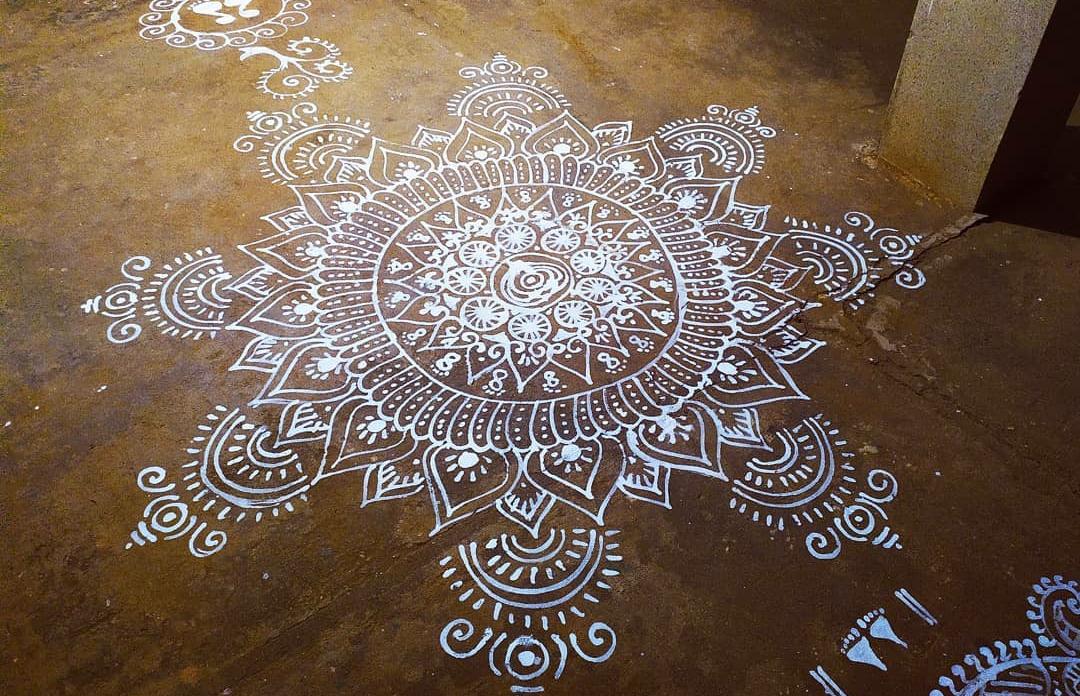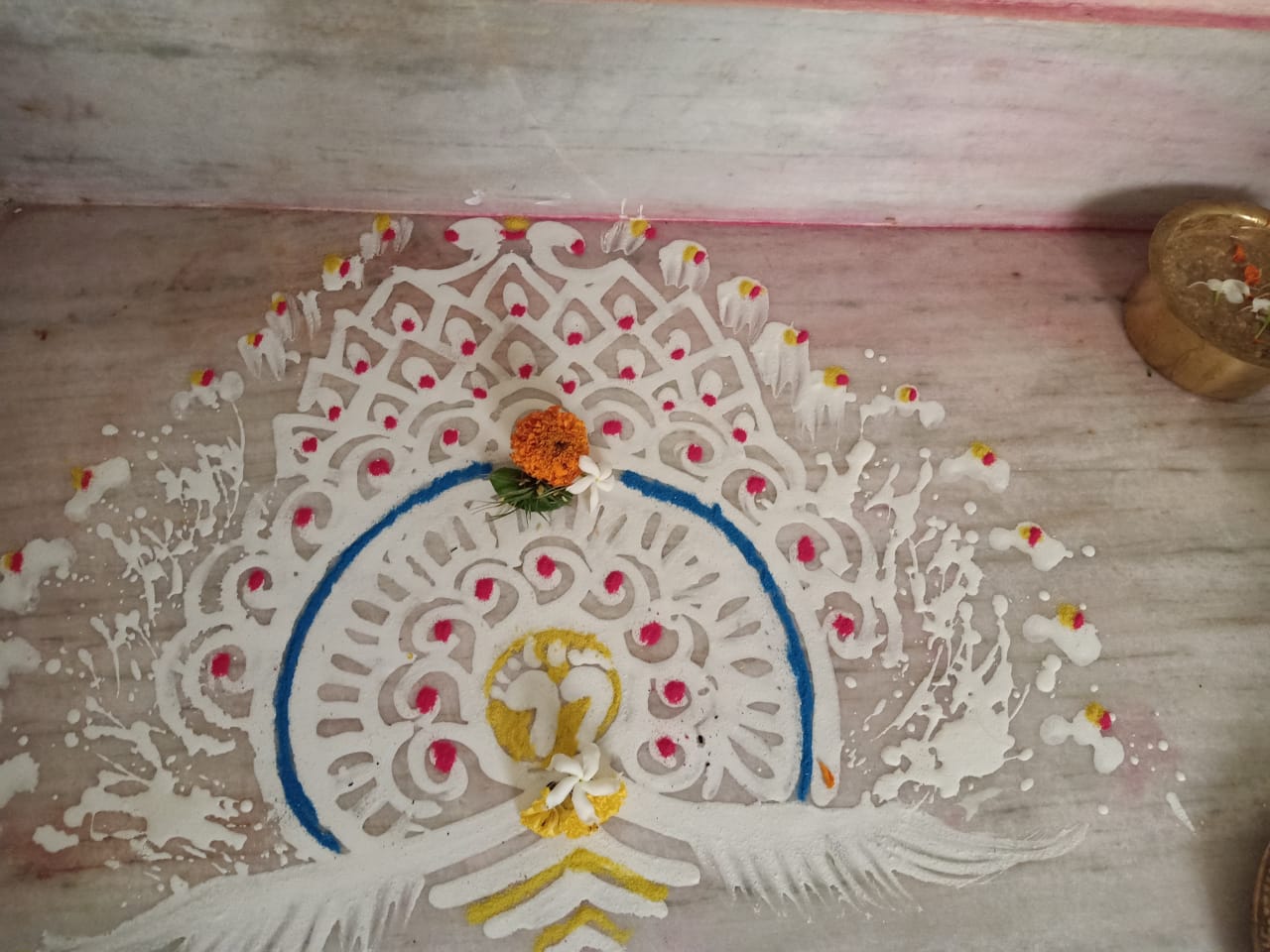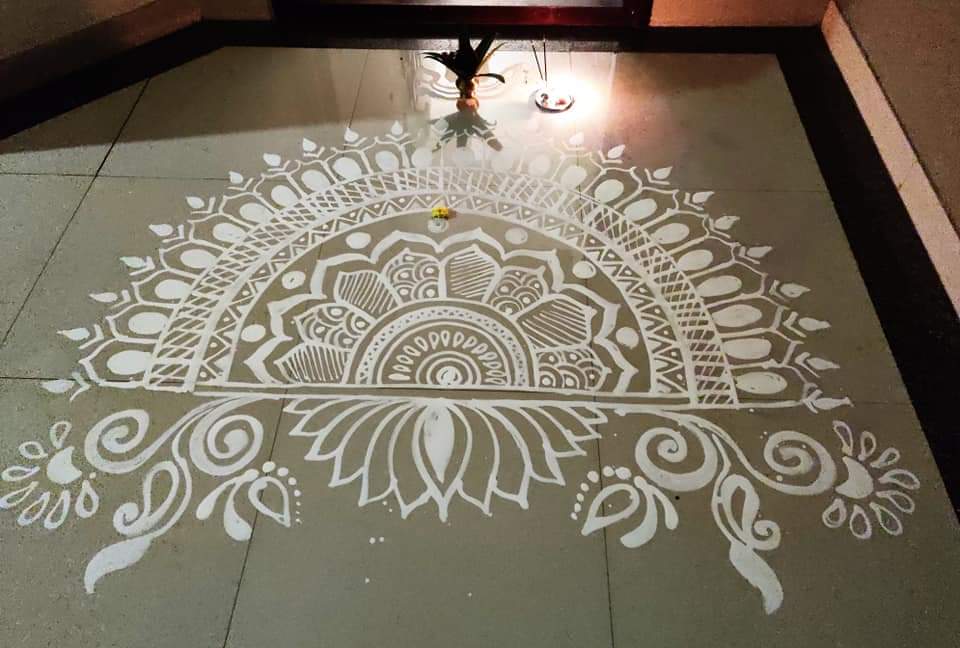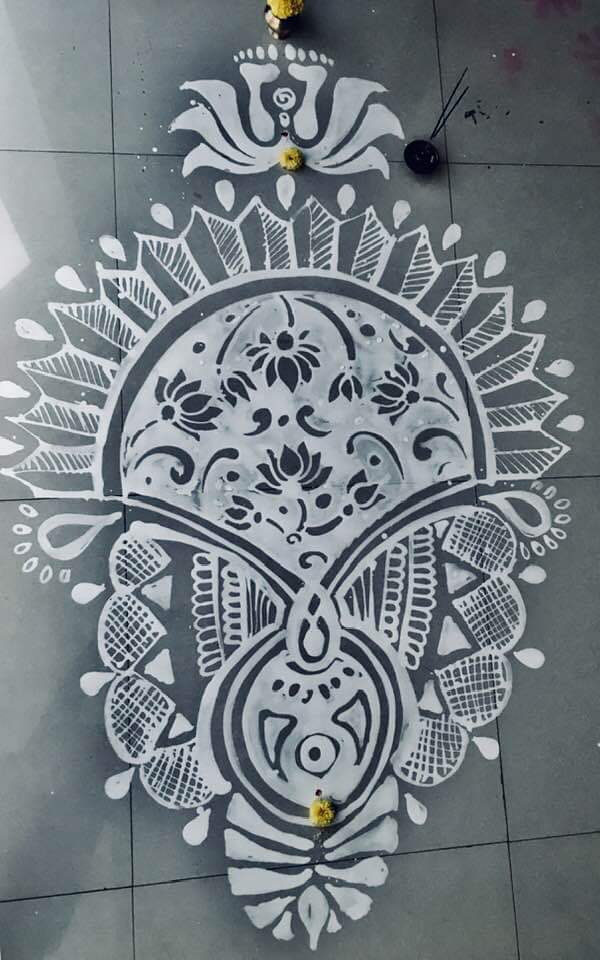Know Divine Significance Of ‘Jhoti Chita’ On Manabasa Gurubar

Bhubaneswar: Manabasa Gurubar (wish-fulfilment Thursday) dedicated to Goddess Lakhsmi is a major festival in Odisha that is celebrated during the lunar month of Margasira, which falls in November-December.
On this day, the puja of Goddess Lakshmi remains incomplete without Jhoti Chita (drawings with rice paste).
After cleaning the house, the womenfolk decorate the rooms and doorways with beautiful designs with rice paste. A piece of cloth tied to a stick is used to create mostly lotus, Lakshmi’s favourite flower, and tiny footprints, which symbolically welcome the Goddess into the house and lead Her right up to the place of worship. The puja is primarily a harvest festival, thanksgiving for the bounty of nature and a prayer for posterity in the coming year.
“As per our age-old tradition, Maha Lakshmi comes to a sanctified house where women perform the spiritual festivities with impeccable devotion,” said Soumya Sephali Sahoo, an English lecturer at a Bhubaneswar-based college.

“We adorn our houses with beautiful designs made with a paste of rice flour called ‘Chita’. The lotus flower and feet of Maha Lakshmi are popular designs drawn to invite the goddess and invoke her blessings. I believe the colour white symbolises purity and divinity,” she added.
“I have learnt the basics of Chita from my mother. From a very tender age, I used to spend hours embellishing the pathways of my house with intricate patterns and designs. The motifs and symbols used reveal the richness of our culture and animate creativity,” said Soumya.
“We cannot explain Manabasa Gurubar excluding Jhoti Chita. We can see beautiful artwork with rice paste in every Odia house on this auspicious day. I believe that ‘Jhoti Chita’ is a connection between the devotees and Maa Lakshmi,” said Pragyan Priyadarshini Sahoo, a lecturer at Khallikote University.
“I used to help my mother in drawing beautiful patterns and preparing for the rituals. Now, I do the same at my in-laws’ place and get everything ready by Wednesday night ahead of Manabasa Gurubar,” she added.
Married women welcome Maha Lakshmi to their houses by making Jhotis on Verandah. The other name of Maa Lakshmi is Padmalaya. Her favourite flower is the lotus. That’s why women draw the feet of the Goddess inside the Lotus flower.
“Maa Lakshmi loves clean houses. We clean our house the day before Manabasa Gurubara and draw Jhoti Chita from the main gate to the puja room in our home. We believe that Maa Lakshmi will come inside our house by stepping on them,” said Pragyan.
“I learnt this from my mother and it takes me two to three hours to draw patterns in the entire house and I do it passionately,” said Pragyan.

“We should keep our traditions alive. This art form is one of the identities of our culture,” she added.
“It is believed that the more we clean our house and draw beautiful Jhoti Chitas, Maa Lakshmi will be satisfied with the puja. The goddess does not judge people on the basis of their status or to which rung of the society they belong,” said Sonalika Purohit Padhi, an Odissi dancer.
“As it is believed that Maa Lakshmi enters the house and stands on every Jhoti Chita, we put flowers and rice on them to welcome her,” said Sonalika.

Though Sonalika is staying in Bengaluru, she follows all the traditions and rituals.
“I love all art forms, as I am an Odissi dancer. Since my childhood, I love to draw Jhoti Chita. I learnt it by observing my mother and grandmother,” said Sonalika.
As mentioned in Lakshmi Purana, Goddess Lakshmi visited the home of Sriya Chandaluni (a low caste woman), as her home was very clean and for the beautiful Chitas that she drew.


Comments are closed.